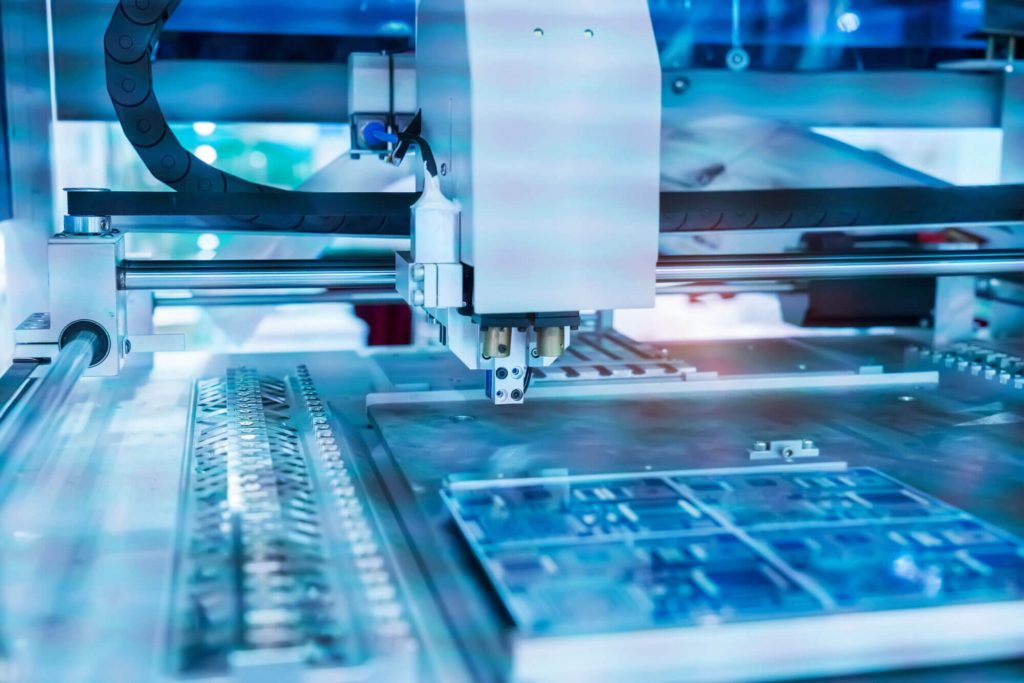July 2022
Optical inspection: software vs hardware solution

When people talk about optical quality inspection, they imagine massive devices with sensors and industrial cameras. Manufacturers who decide to use quality assurance sometimes have to rebuild the entire production line to install a QA system.
What is different with a software solution for optical inspection?
Compared to hardware-focused quality assurance, software providers work with deep learning algorithms to enable flexible optical inspection in real manufacturing conditions. Optical inspection with a software solution works while products are moving on the line, lighting conditions are changing and high-frequency vibrations are occurring. This is possible because the focus of the software-based solutions is image processing. This means that the main part of the optical inspection happens after the image of the part has been taken. In contrast, the hardware solutions focus on capturing a “perfect” image that is easy to analyse.
To ensure great image quality, where the area of interest and possible defects are clearly visible, hardware-based QA providers optimise external factors. They stabilise the assembly line, so that produced parts pass through the camera at a certain angle. Hardware solutions require a built-in line stopper. Each part has to stop for 3-5 seconds to allow the camera device to capture the image. The light is configured in a way that no reflections occur. As a result, a highly controlled environment is created that allows the same results to be produced under the same circumstances. The advantage here is that you can predict the hardware solutions well.
The challenges with the hardware solution are:
- Not all manufacturing plants can have 100% controlled environments
- It’s mostly hard and very expensive to rebuild assembly lines
- Solution cannot be flexibly adjusted if the product characteristics change
- Line stoppers significantly decrease plant productivity
Instead of adapting the assembly line to the QA solution, producers can have a software solution for optical inspection that adapts to the manufacturing conditions. Software solutions prioritise image processing techniques to ensure environment-independent quality inspection. For this, the user trains a model with sample images of the parts. The model learns in this way which regions of interest which part has and what is considered as a defect.
Optical inspection software is activated when the part comes into the camera’s field of view. The software uses image processing techniques to achieve what the hardware solutions can do with additional equipment. Due to the advanced processing software solution has as an output: sharp image, clearly visible region of interest and reduced reflections.
Of course, software-based solutions also need hardware to function. A camera device and a mounting are necessary. The advantage is, however, that the manufacturer can choose any camera device suitable for their use case and manufacturing conditions. Manufacturers can deploy software-based optical inspection with industrial cameras, microscopes, special cameras (for example temperature resistant cameras) and even smartphones. Software-focused solutions are compatible with any device and thus can be easily installed to any factory floor.
If the manufacturer adjusts the assembly line or changes the product, software optical inspection can be updated immediately. Since software solutions do not require a stable camera position, lighting and controlled assembly line, the inspection criteria can be changed easily. The model can be changed by providing new labelling: the software has to learn how the objects look like, what is the region of interest and what are the defects.
Benefits with a software solution for optical inspection:
- No modifications to the production line
- Opportunity to test the solution before installing it in the plant
- Easy integration to the industrial system
- Combination with any hardware
- Functionality in real manufacturing conditions